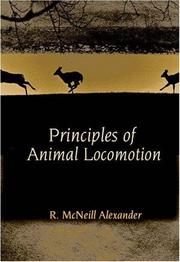| Listing 1 - 10 of 33 | << page >> |
Sort by
|
Book
Year: 1899 Publisher: Paris : F. Alcan,
Abstract | Keywords | Export | Availability | Bookmark
 Loading...
Loading...Choose an application
- Reference Manager
- EndNote
- RefWorks (Direct export to RefWorks)
Book
Year: 1891 Volume: 3 Publisher: Paris : F. Alcan,
Abstract | Keywords | Export | Availability | Bookmark
 Loading...
Loading...Choose an application
- Reference Manager
- EndNote
- RefWorks (Direct export to RefWorks)
Book
Year: 1966 Publisher: [Paris] : Hachette,
Abstract | Keywords | Export | Availability | Bookmark
 Loading...
Loading...Choose an application
- Reference Manager
- EndNote
- RefWorks (Direct export to RefWorks)
Book
Year: 1873 Publisher: Paris : G. Baillière,
Abstract | Keywords | Export | Availability | Bookmark
 Loading...
Loading...Choose an application
- Reference Manager
- EndNote
- RefWorks (Direct export to RefWorks)
Book
Year: 1955 Publisher: Springfield, Ill. Thomas,
Abstract | Keywords | Export | Availability | Bookmark
 Loading...
Loading...Choose an application
- Reference Manager
- EndNote
- RefWorks (Direct export to RefWorks)
Book
Year: 1873 Volume: vol. 7 Publisher: London : H. S. King & co.,
Abstract | Keywords | Export | Availability | Bookmark
 Loading...
Loading...Choose an application
- Reference Manager
- EndNote
- RefWorks (Direct export to RefWorks)
Animal locomotion --- Aeronautics --- Locomotion animale --- Aéronautique
Book
Year: 1887 Volume: 5 Publisher: Paris : G. Baillière,
Abstract | Keywords | Export | Availability | Bookmark
 Loading...
Loading...Choose an application
- Reference Manager
- EndNote
- RefWorks (Direct export to RefWorks)
Animal locomotion --- Aeronautics --- Locomotion animale --- Aéronautique

ISBN: 0691126348 1306046041 0691086788 1400849519 9780691126340 9780691086781 Year: 2003 Publisher: Princeton, N.J. : Princeton University Press,
Abstract | Keywords | Export | Availability | Bookmark
 Loading...
Loading...Choose an application
- Reference Manager
- EndNote
- RefWorks (Direct export to RefWorks)
How can geckoes walk on the ceiling and basilisk lizards run over water? What are the aerodynamic effects that enable small insects to fly? What are the relative merits of squids' jet-propelled swimming and fishes' tail-powered swimming? Why do horses change gait as they increase speed? What determines our own vertical leap? Recent technical advances have greatly increased researchers' ability to answer these questions with certainty and in detail. This text provides an up-to-date overview of how animals run, walk, jump, crawl, swim, soar, hover, and fly. Excluding only the tiny creatures that use cilia, it covers all animals that power their movements with muscle--from roundworms to whales, clams to elephants, and gnats to albatrosses. The introduction sets out the general rules governing all modes of animal locomotion and considers the performance criteria--such as speed, endurance, and economy--that have shaped their selection. It introduces energetics and optimality as basic principles. The text then tackles each of the major modes by which animals move on land, in water, and through air. It explains the mechanisms involved and the physical and biological forces shaping those mechanisms, paying particular attention to energy costs. Focusing on general principles but extensively discussing a wide variety of individual cases, this is a superb synthesis of current knowledge about animal locomotion. It will be enormously useful to advanced undergraduates, graduate students, and a range of professional biologists, physicists, and engineers.
Animal physiology. Animal biophysics --- Animal locomotion --- Animal locomotion. --- Locomotion animale --- Locomotion animale. --- Locomotion. --- Animal running --- Animal walking --- Running, Animal --- Walking, Animal --- Animal mechanics --- Locomotion
Book
ISBN: 0387194193 3540194193 3642738141 3642738125 Year: 1989 Publisher: Berlin : Springer-Verlag,
Abstract | Keywords | Export | Availability | Bookmark
 Loading...
Loading...Choose an application
- Reference Manager
- EndNote
- RefWorks (Direct export to RefWorks)
Animal locomotion --- Locomotion animale --- Early works to 1800 --- Ouvrages avant 1800
Book
ISBN: 9783639082944 Year: 2008 Publisher: Saarbrücken : VDM Verlag Dr. Müller,
Abstract | Keywords | Export | Availability | Bookmark
 Loading...
Loading...Choose an application
- Reference Manager
- EndNote
- RefWorks (Direct export to RefWorks)
This book examines the two chief anatomical and physiological embodiment theories of voluntary animal motion, which I call the cardiosinew and cerebroneuromuscular theories of motion, from the time of Aristotle (384-322 B.C.) to that of Mondino (d. A.D. 1326). The study of animal motion commenced with the ancient Greek natural scientist Aristotle who wrote the monograph 'On the motion of animals' (De motu animalium). Subsequent inquiries into voluntary animal motion may be found in a variety of Greek, Latin, and Arabic compendia, commentaries, and encyclopedias throughout the ancient and medieval periods. The motion of animals was considered relevant to natural philosophers and theologians investigating the nature of the soul, and to physicians seeking to discover the causes of disorders of voluntary movement such as epilepsy and tetany. The book fills a gap in the scholarly literature concerned with pre-modern studies of the anatomical and physiological mechanisms of will and bodily movement. The accompanying photographs of my own anatomical dissections illuminate ancient and medieval conceptual, empirical, and experimental methods of anatomical and physiological research.
Locomotion animale --- Animal locomotion. --- Motor ability. --- Animal mechanics. --- Medicine --- History --- Locomotion
| Listing 1 - 10 of 33 | << page >> |
Sort by
|

 Search
Search Feedback
Feedback About UniCat
About UniCat  Help
Help News
News